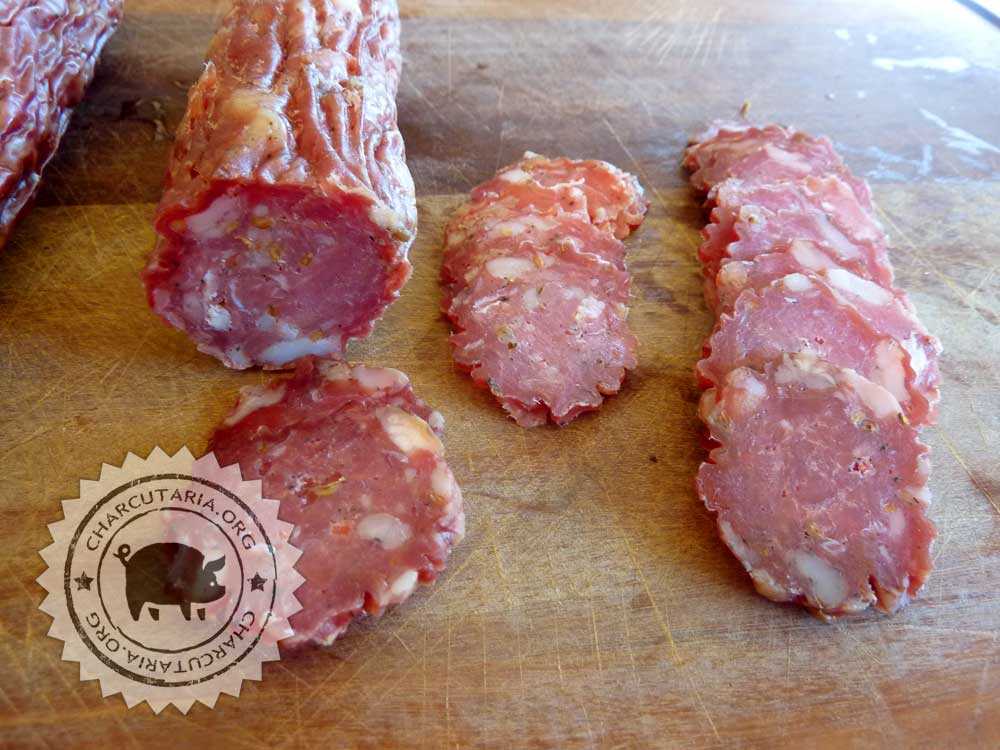
This is an Italian recipe from the Provenance region, Sardinia island. Sardinia is a paradisiacal island in the Mediterranean Sea that, in addition to its natural beauty, presented us with a salami made by hand using lamb meat. Lamb meat has a strong flavor, which makes this product a delicacy for those who enjoy a more pronounced meat flavor. Sardinian salami is originally cured for a long period, around 4 months, which is why it resembles raw ham.
Sardinian Salami Ingredients
Meat
- Lamb shank – 90% – 1500g;
- Bacon/Pork Belly – 10% – 150g;
Condiments and additives
- Salt – 2% – 33g;
- Sugar – 1% – 16g;
- Antioxidant (with sodium erythorbate) – 0.24% – 4g;
- Curing salt 2 (6% of nitrite, 3% of nitrate and 93.75% of salt) – 0.24% – 4g;
- Fennel in grains – 7g;
- Dehydrated granulated garlic – 7g;
- Ground black pepper – 4g;
- Starter culture (lactic acid bacteria) – a teaspoon of coffee diluted in 100ml of filtered water;
- Red wine – 50ml.
Preparation of lamb salami from the Island of Sardinia
Grind the meat and two thirds of the fat into a fine disc;
Chop 1 third of the fat into small cubes (half a cm) so that it appears in the salami. This fat is decorative and, if you don't want pieces of fat visible in the salami, grind it together with the meat.
Mix all the ingredients well until the salami dough becomes sticky. Approximately 2 minutes. You can mix with your hands, using an orbital mixer or kneader.
Embed in straight collagen or natural beef casing measuring between 45mm and 60mm, depending on the desired thickness of the salami. In this case I used 45mm collagen casing.
Poke holes with a pin/needle or pricker to remove air bubbles that are trapped between the casing and the salami dough. Air bubbles oxidize the fat and create areas with a different color and rancid taste, which is why they need to be removed.
Weigh each salami and record the initial weight.
Hang the salami in an environment with a temperature between 12ºC and 15ºC with relative humidity close to 80%.
There is no need for fermentation as the wine works as an acidifier. Fermentation in salami generates lactic acid and protects it through acidification. The starter culture adds flavor and aroma through enzymatic action that is fundamental in the formation and color stability of the final product. The starter culture also has lipolytic and proteolytic activities, involved in aroma formation.
Leave hanging until the salami has lost between 35% and 40% of its initial weight.
Salamis weight loss
SALAME 1
starting weight: 363g
final weight: 202g
loss: 45%
SALAME 2
starting weight: 316g
final weight: 173g
loss: 45%
SALAME 3
starting weight: 333g
final weight: 177g
loss: 47%
SALAME 4
starting weight: 315g
final weight: 168g
loss: 47%
SALAM 5
starting weight: 182g
final weight: 101g
loss: 45%;
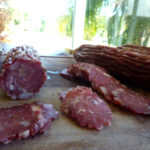
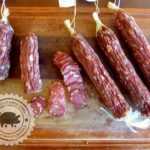
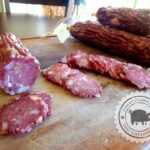
-
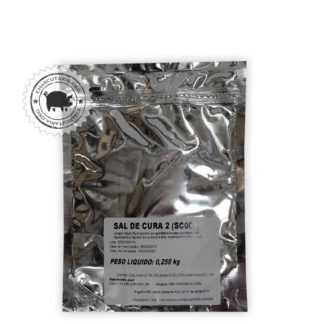 Curing salt 2R$ 8,00
Curing salt 2R$ 8,00 -
 Curing salt 1R$ 8,00
Curing salt 1R$ 8,00 -
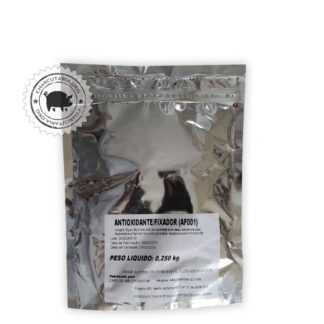 Fixative AntioxidantR$ 23,00
Fixative AntioxidantR$ 23,00 -
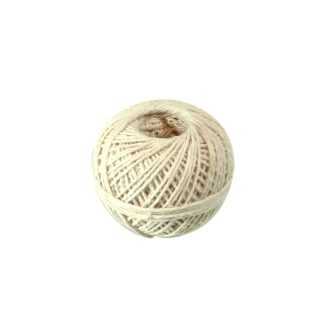 Culinary twineR$ 7,90
Culinary twineR$ 7,90 -
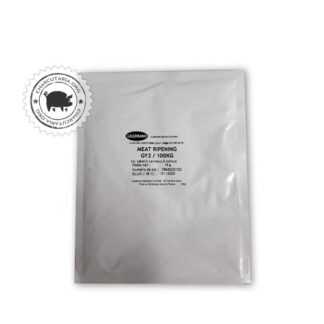 Starter CultureR$ 69,90
Starter CultureR$ 69,90 -
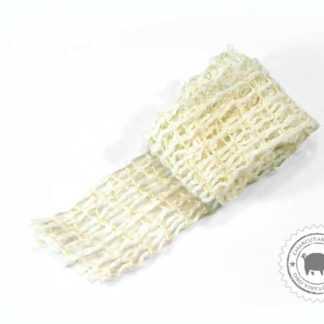 Culinary elastic net 50mmR$ 15,00
Culinary elastic net 50mmR$ 15,00 -
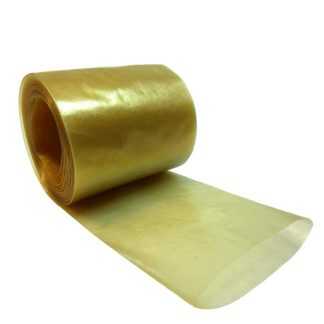 Collagen casing 45mm roll 5 meters salamiR$ 19,00
Collagen casing 45mm roll 5 meters salamiR$ 19,00 -
 Culinary elastic net 65mmR$ 18,00
Culinary elastic net 65mmR$ 18,00 -
 Collagen casing 80mm cup and salamiOriginal price was: R$ 39,00.R$ 29,90Current price is: R$ 29,90.
Collagen casing 80mm cup and salamiOriginal price was: R$ 39,00.R$ 29,90Current price is: R$ 29,90. -
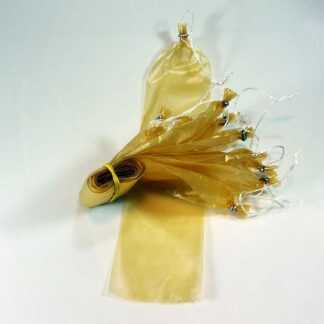 Salami collagen casing 45mm 10 units tiedR$ 19,00
Salami collagen casing 45mm 10 units tiedR$ 19,00 -
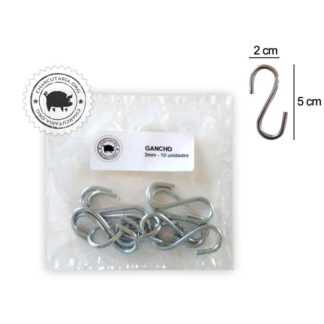 Galvanized HookR$ 12,00
Galvanized HookR$ 12,00 -
 Natural pork casing for sausageR$ 52,00
Natural pork casing for sausageR$ 52,00

Hello, did you leave it for 4 months to mature?
He spent around 30 days losing weight/maturing.
Eduardo, which red wine do you use, dry or smooth? Another thing, how do I manage/build an environment with 15 degrees and 80% humidity?
I use whatever wine is available, with no rules for that. Regarding humidity and temperature, most adapt an old minibar or refrigerator with a “full gauge” type controller, which turns the refrigeration on and off and a humidifier attached inside the refrigerator. You can also use a wine cooler that already comes with temperature control. Humidity in this case can be raised by using pots of water at the bottom of the cellar.
Good evening Eduardo, in the recipe it is described to grind with a fine disc but in the video you ground it with a coarse disc? Another question? Should I use culture? Thanks!
For salami, the thickness of the disc won't make much difference. The thin disc will make mixing and binding easier, but the wider disc will work too. If you want a product with more quality, use the culture, yes, it will help with flavor, aroma, and protection. If you do it without the starter culture, add a little wine to help with protection (acidification). Hugs!
Can I use Yakult instead of starter?
Yes, it is possible to do so, fermented milk (yakult) will acidify and protect, but it will not add other benefits. I usually make it either without fermenting with a little wine or I use a good starter culture, with a variety of bacteria that bring several benefits. I've already used yakult but in this case as it will only acidify, I think it's easier to use wine and skip fermentation.
I made your recipe with Yakult and the salami was very good. I left it at room temperature for a day and a half. It took thirty days to mature in the minibar with an adapted fan, losing 35% in weight. During this time, I noticed a very thin layer (almost imperceptible) of white mold that started to appear. I wanted to buy your starter, but I'm afraid of ruining it. I live in the interior of Rio de Janeiro.
The ideal is to apply the mold, but if this layer of mold is very white and thin, like a powder, then it is probably harmless mold. With 35% of loss, the salami is still very soft. If you want it firmer, leave it until it loses 45%, it will be much firmer. The cultures can last 15 days outside the freezer, depending on shipping they arrive without problems. But you can do without anyway. A big hug!